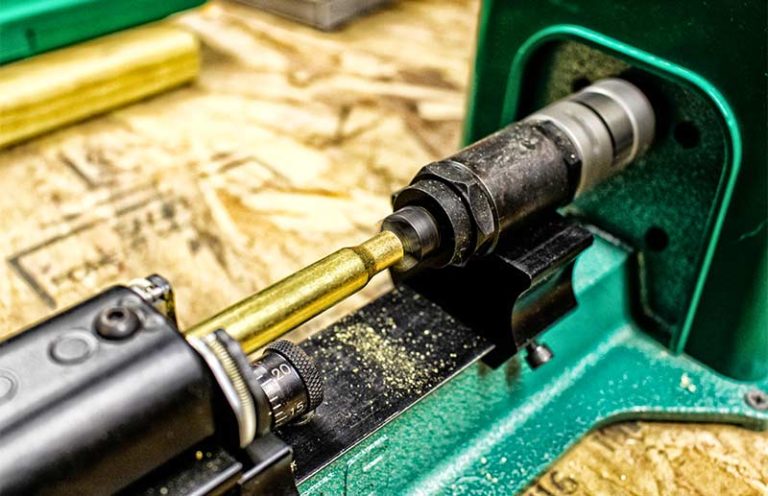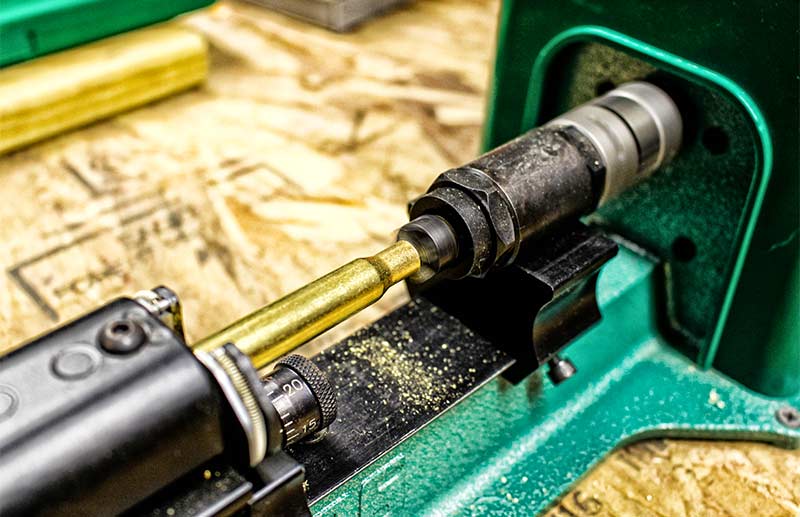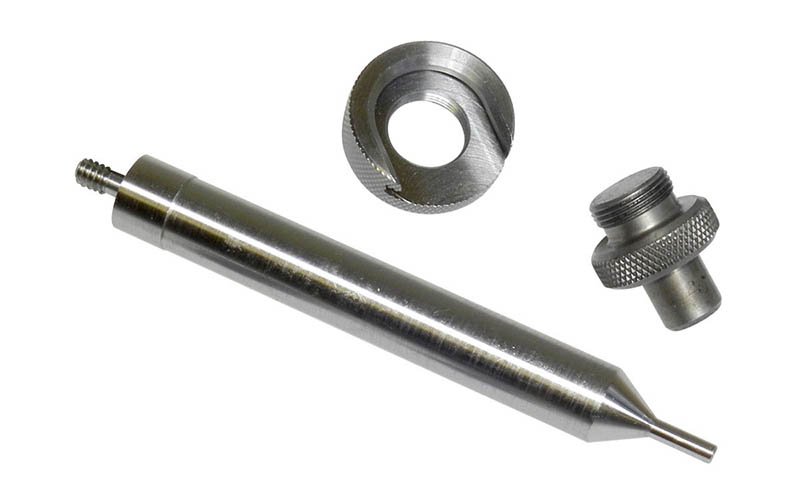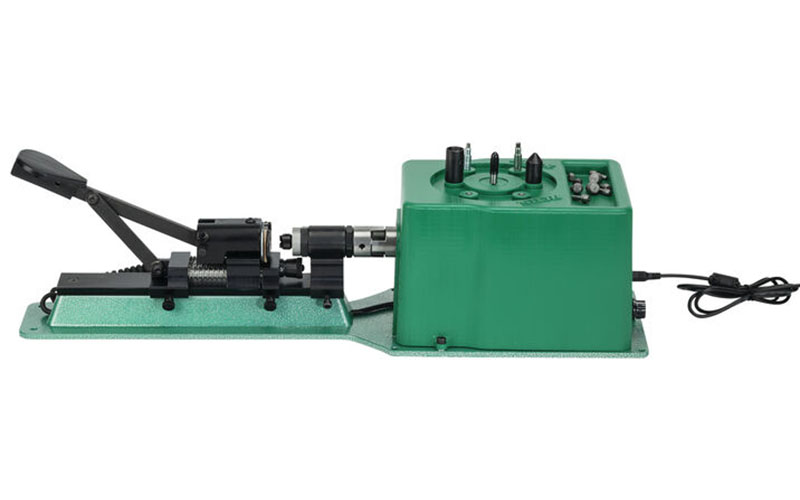
Regardless of how fancy your case trimmer is, here's why it's crucial that you trim cases to the exact proper length.
Bring fired cases back into spec for reloading, trimming cases can often seem like a chore. Without trimming the cases, things can go awry, and trimming your cases is an important part of keeping things as uniform as possible.
Our cases are made of brass for the malleable qualities of that metal; it’s strong enough to handle the rigors of day-to-day handling, yet soft enough to be able to be reformed. However, over the course of multiple firings and resizing, brass will stretch. Our cases tend to see the brass flow from the base of the case toward the mouth, lengthening the case. In many instances, that length will need to be trimmed to a uniform dimension.

Case Specifics
For the pistol cases, trimming is paramount. In most instances regarding the auto-loading cartridges, the case mouth is used for headspacing. While it doesn’t happen often, the potential is there to have the cases of the .45 ACP, .40 S&W, 9mm Luger and their ilk to stretch to the point where the case length is too long for the chamber. If I’ve used my pistol cases for a number of firings, I’ll often check the length to see if they need a quick trim.
Revolver cases, on the other hand, definitely need to be trimmed to a uniform length, as they’ll use a roll crimp to keep the bullet firmly in place, more often than not. That roll crimp is usually applied via a small shelf in the inside of the seating die. As that die will be set in a stationary position, you can easily envision how a case that’s too short will give a very light crimp and how a case that’s too long will put an excess crimp, rolling the case mouth much too hard. But once you’ve got your cases trimmed to a uniform length, the roll crimp can be set to give the perfect amount of crimp to hold the projectiles with the same amount of force each time.
The same principle outlined above for the revolvers can be applied to the straight-walled rifle cases, as the bullets will need to be crimped in place to prevent them from either pulling out of the case mouth under recoil in the magazine or being pushed further into the case. This can be crucial with those cartridges destined for lever-action rifles with tubular magazines, as the bullet of one cartridge is pushed against the base of the cartridge in front of it and if that bullet isn’t properly crimped, you’ll see it move further into the case after being loaded several times. Uniform case length equals a uniform roll crimp and that can make a big difference in pressures and velocity.
Trimming Tools
Looking at the tools available for trimming cases, you’ll see a diverse selection, from the simplest hand tools to motor-driven, micrometer-adjustable machines. Among the simplest—and yet wonderfully effective—is the Lee Case Length Gauge and Trimmer (street price less than $25), which uses a cartridge-specific shell holder and a length/caliber-specific gauge, combined with a cutter to trim your case to proper SAAMI-approved case length. It requires a bit of elbow grease, though the unit can easily be adapted to an electric drill to make life easier. The length gauge is piloted through the case’s flash hole, so you get a nice, square cut.

There’s also a hand-cranked case trimmer, looking much like a conventional pencil sharpener. The base of the case is held by a collet, and the case mouth is held against a cutter. The user can adjust the setup to give a specified length; the case mouth is trimmed when the user cranks the handle. I like the Redding 2400 Match Precision Case Trimmer (street price about $205)—though there are numerous models from different reloading manufacturers—for both its precision and ease of use.

The motor-driven trimming tools are quite fancy and can trim a lot of brass without wearing out your wrists and fingers. I have a micrometer adjustable RCBS Universal Case Prep Station (street price about $550) with a variable speed motor that has more than earned its keep over the years. It comes in handy when I’m converting brass from one cartridge to another. The spring-loaded jaws will handle most cartridges.
And the micrometer allows the user to quickly dial in the amount to be trimmed off. A caliber-specific pilot keeps the case as square to the cutter face as possible for the most uniform cut, and the motor is cut off when the handle is depressed to release the cartridge from those spring-loaded jaws.

While these are just three examples of different types of trimmers—and there are a good number of models to choose from—it should illustrate what’s available. Think about the volume of reloading you intend to do; if it entails just a couple of different calibers, the simpler setups might be the wiser investment. If you end up loading for all sorts of guns, one of the faster units might make complete sense.
A Note on Length
One last thing: There’s often a debate about what length to trim your cartridges. You may see the SAAMI-specified length listed as one dimension and then a “trim to” dimension, which will be a bit shorter. I generally stick with the (longer) SAAMI dimension, as I often use new cases and don’t like heavily trimming new brass. In some instances, it reduces the neck length of a case (think .300 Winchester Magnum) with an already short neck. If you prefer to trim a bit shorter, in order to keep everything uniform—both new and previously fired cases—I won’t argue, but realize it can have a minor effect in some instances.
Editor's Note: This article originally appeared in the December 2021 issue of Gun Digest the Magazine.
More On Reloading:
- Tips For Reloading the .30-06 Springfield
- Loving Your Luger: Reloading the 9mm Luger
- Handloading: Tips For Reloading The 7mm Rem Mag
- How To: Tips For Reloading the .223 Remington
- Reloading Bench: The Inside On Reloading For The .30-30 Winchester

Next Step: Get your FREE Printable Target Pack
Enhance your shooting precision with our 62 MOA Targets, perfect for rifles and handguns. Crafted in collaboration with Storm Tactical for accuracy and versatility.
Subscribe to the Gun Digest email newsletter and get your downloadable target pack sent straight to your inbox. Stay updated with the latest firearms info in the industry.

![Best Concealed Carry Guns In 2025 [Field Tested] Wilson Combat EDC X9S 1](https://gundigest.com/wp-content/uploads/Wilson-Combat-EDC-X9S-1-324x160.jpg)


![Best 9mm Carbine: Affordable PCCs [Tested] Ruger Carbine Shooting](https://gundigest.com/wp-content/uploads/Ruger-Carbine-Shooting-100x70.jpg)
![Best AR-15: Top Options Available Today [Field Tested] Harrington and Richardson PSA XM177E2 feature](https://gundigest.com/wp-content/uploads/Harrington-and-Richardson-PSA-XM177E2-feature-100x70.jpg)

Been a trim to length Reloader for years. I still use the Lee Gauges as they were cheap and effective